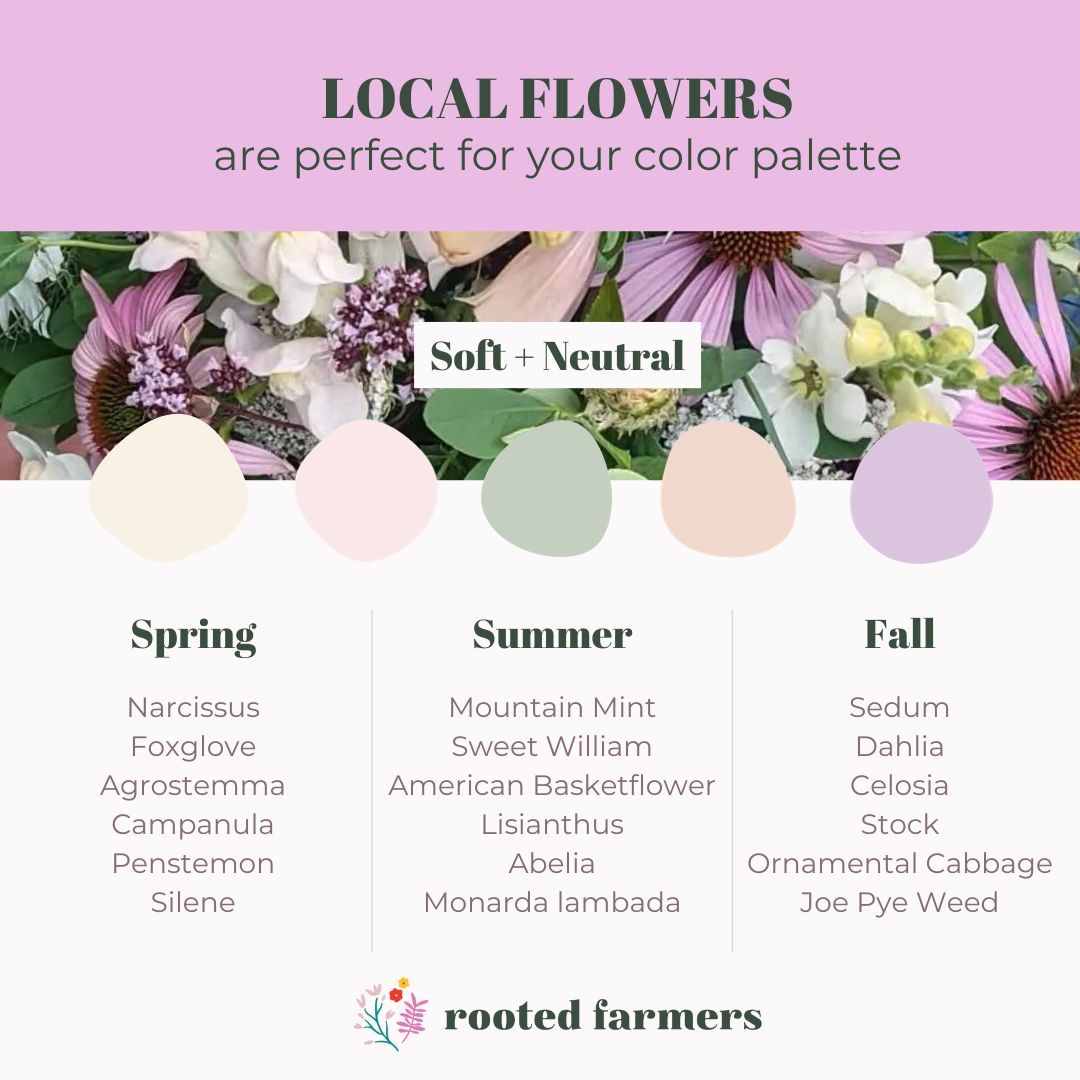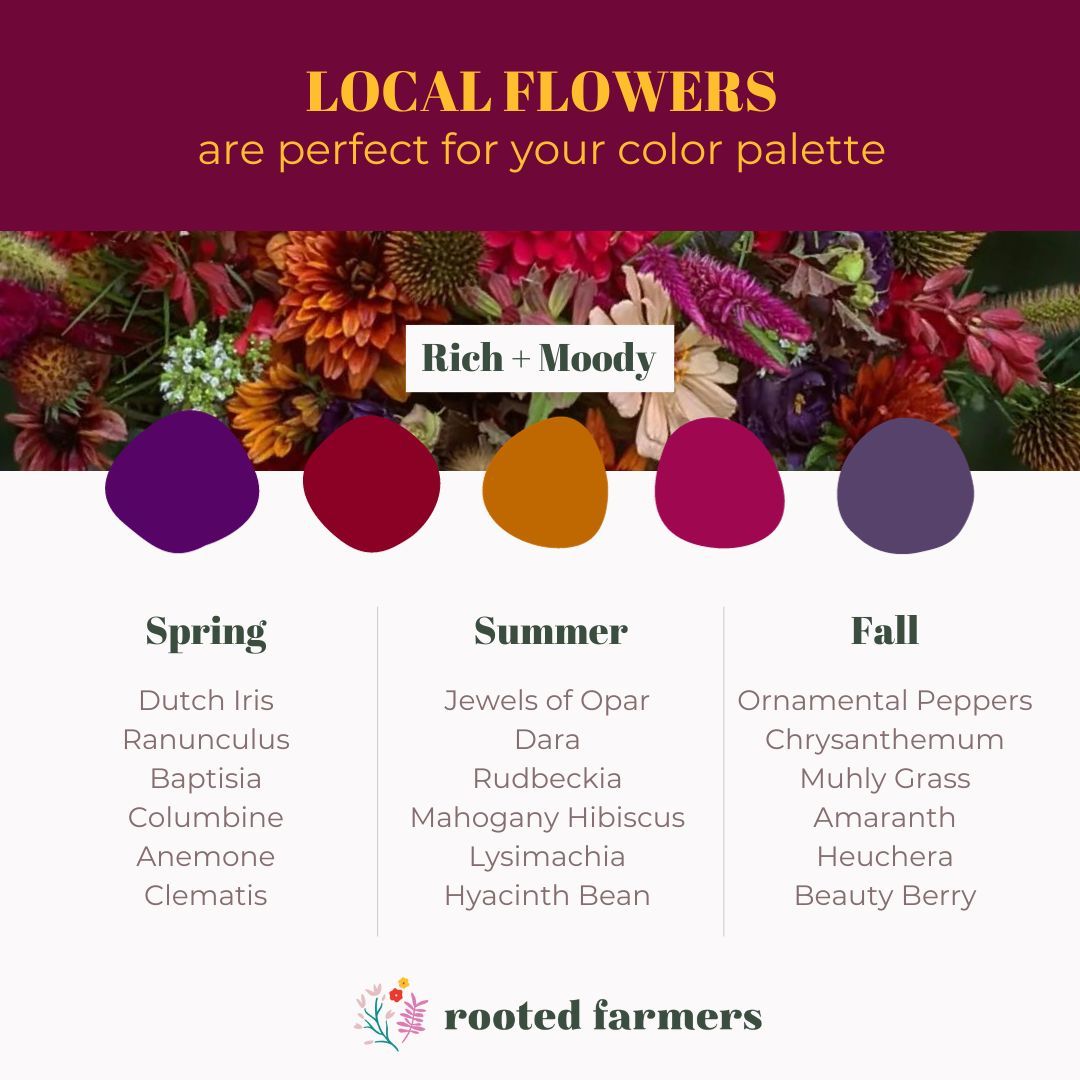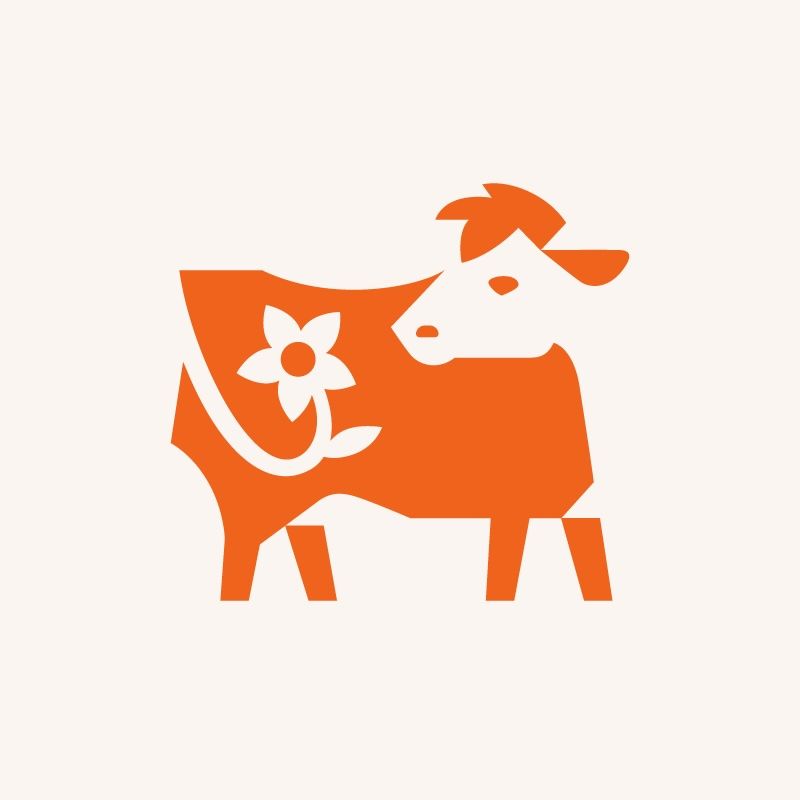Whether you are designing for a friend’s shower, or bringing your wedding together on a budget, color is one of the foundations of bringing your event together in style!
It can be easy to feel stuck with choices to fit popular color palettes, but local flowers bring exciting and fun textures, colors, and shapes to elevate your arrangements. It’s not all zinnias and sunflowers (though, those are key local flowers with flair, whimsy, and zest)— local flowers hit the softest neutrals to the most luxurious, dramatic tones with earthy, muted, vibrant, and saturated hues for everything in between. As a bonus, the seasonality aspect of local flowers means there’s always something new to pick from!
Before you choose your color palette, let’s dive into a quick how-to!
Choosing Your Color Palette: A How-To
Consider your space. Will you be indoors or outdoors? Are there fixtures that include color that you are looking to incorporate? Are you looking for big splashes of color or smaller accents?
Consider your textiles. Tablecloths, napkins, drapery, or attire (e.g. bridal party attire) are other areas where color can be integrated into your design aesthetic. Consider whether your color choices are complimentary and how they may appear in if they are photographed together.
Consider your vessels. Do you already have vessels in mind with colors you’ll need to compliment? Although glass is a nice neutral, we tend to prefer containers that can hide messy stems and mechanics. Ceramic is a nice alternative, but there are lots of non-traditional vessels that would work well also (e.g. sap buckets, footed bowls). Whatever you choose, be sure to consider whether the color plays nicely with your florals.
Now that you have your space, textiles, and vessels in mind, let’s take a look at a few popular color palettes below.
1. Soft and Neutral
- Spring: White, cream, and apricot Narcissus, Foxglove, Agrostemma, Campanula, Silene, Penstemon
- Summer: Mountain Mint, Sweet William, American Basketflower, Lisianthus, Abelia, Monarda lambada
- Fall: Sedum, Dahlia, Celosia, Stock, Ornamental Cabbages, Joe Pye Weed

2. Vibrant and Bright
- Spring: Calendula, Poppy, Mediterranean Bells, Peony, Cottage Yarrow, Geum
- Summer: Crocosmia, Zinnia, Cardinal Basil, Cosmos, Echinacea, Helenium
- Fall: Marigolds, Goldenrod, Japanese Anemone, Strawflower, Gomphrena, Dill

3. Rich and Moody
- Spring: Dutch Iris, Ranunculus, Baptisia, Columbine, Anemone, Clematis
- Summer: Jewels of Opar, Dara, Rudbeckia, Mahogany Hibiscus, Lysimachia, Hyacinth Bean
- Fall: Ornamental purple peppers, Chrysanthemum, Muhly Grass, Amaranth, Heuchera, Beauty Berry

Related: Looking for more local flower inspiration? Check out our post ‘Local Staples: A Substitution Guide for Popular Flowers.’

About the Author
Rooted Farmers
The Rooted Farmers Team is happy to bring you content that we hope provides value. The topics covered range from farming and running a hub, to sales, marketing, and all things related to building your business, to the unique challenges faced by growers. Our philosophy in sharing this content is that we are always in a position to learn; embracing this mentality will only help us to grow, both within our businesses and personally. If there is a topic that you feel would be of value to the Rooted Farmers community, we encourage you to share your ideas with us by sending an email to: reachout@rootedfarmers.com
